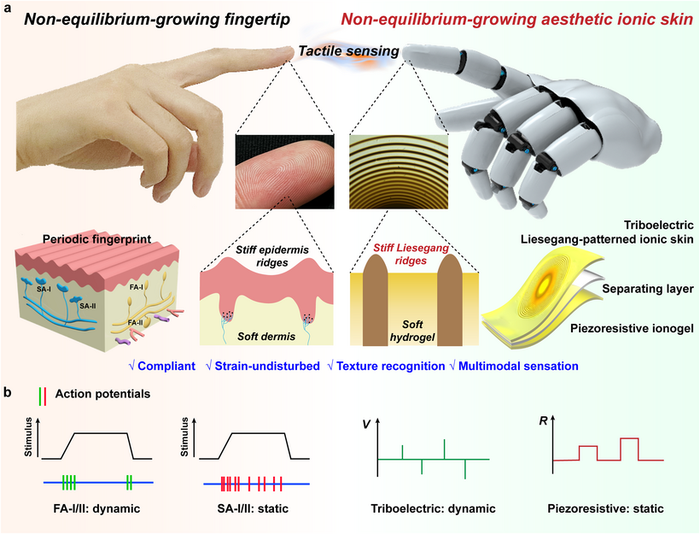Ionic Skin Allows Robots to Feel
A new hydrogel-based soft “skin” could give robots the sense of touch

Robots are gaining increasingly human capabilities and now, with the help of ionic skin, they may be able to feel the objects they touch.
In a new project from researchers at Donghua University in China, the skin emulates the function of fingertips, allowing the robot to feel objects and recognize their texture.
The team used hydrogel materials to design the skin, molding them to mimic the indentations and ridges of fingertips in a process known as Liesegang patterning. The material registers texture as well as pressure exerted on its surface and changes in air pressure.

Non-equilibrium-growing aesthetic ionic skin for fingertip-like strain-undisturbed tactile sensation and texture recognition. Credit: Haiyan Qiao, Donghua University, China.
In the future, the team said their novel material could be used to create soft robotic skin and artificial fingers, used to register objects when a robot grasps them.
“By coupling [the hydrogel matrix] with another piezoresistive ionogel, an artificial tactile sensory system is further fabricated as a soft robotic skin to mimic the simultaneous fast- and slow-adaptive multimodal sensations of fingers in grasping actions,” they wrote. “This approach may inspire the future design of high-performance ionic tactile sensors for intelligent applications in soft robotics and prosthetics.”
Research into creating soft robotic skin has increased in recent years, with innovators looking to give robots increased tactile capabilities and sensitivity to improve their interactions with and understanding of the objects around them.
The Donghua University team, alongside the Jülich Centre for Neutron Science in Germany, also developed a self-healing artificial ionic skin last year. Designed using elastic nanomesh, the soft structure becomes stiff when stretched and can reform if damaged. This artificial skin has also been heralded by the team as a potential game-changer in creating durable, humanoid skin for robots.
Read more about:
AsiaAbout the Author
You May Also Like








